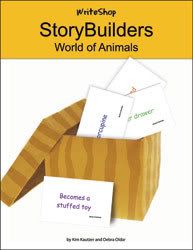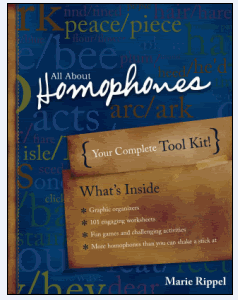 Some children need to use tools to help them focus on a task, either due to a special need or just a tendency to become distracted easily. Heads Up! offers a variety of tools to help a child successfully focus on assigned work. Quoted from the Heads Up! website:
Some children need to use tools to help them focus on a task, either due to a special need or just a tendency to become distracted easily. Heads Up! offers a variety of tools to help a child successfully focus on assigned work. Quoted from the Heads Up! website:Heads Up! is a company designed to provide expert information and products for special needs children. Our items have been selected to accommodate various learning styles and strengths, regardless of curriculum used. These special needs products have been found to be especially helpful for children who are distractible or hyperactive.
Our goal is to provide materials and information for homeschooling families, occupational therapists, speech therapists, teachers, and specialists who work with children who have developmental delays, learning disabilities, or other special needs. Professionals, as well as parents and families interacting with special needs children, need materials and teaching tips that will be effective in promoting successful learning experiences while reducing frustration for children, teachers, and parents.
I was able to try out a variety of frames: tinted, transparent plastic frames that can be placed over a page to highlight and box-in specific parts of the printed material on the page. These are listed under the heading of "Reducing Distractions" on the Heads Up! site. They are also listed under the "Reading/Visual" product category along with a handful of other reading aids that I was able to take a look at. Single and double line tinted strips of plastic, again placed on top of printed material, help to keep the reader focused just on the highlighted line(s). You have the options of choosing strips that have opaque gray areas above and below the highlight or just below.
My final verdict: My child, who does not have special needs, found the highlighting frames and strips to be novel, but not of much use. In fact I think they did more to distract her as she wanted only to play with them. BUT, funny enough I found a use for the strips that I really appreciated: using them to focus on one line of information in a spreadsheet. I am guessing though that these products would be immensely useful to children who do have trouble focusing when confronted with an entire page of information: math problems, lists of items, reading sentences on a book page. Heads Up! has lots of helpful products in addition to the ones I got to review. Among other things they offer handwriting aids (I'm thinking I may purchase some of the unique pencil grips), time management helps (timers of all kinds), and fun learning materials (games!). If you have a special needs child, Heads Up! provides products helpful for children with ADD/ADHD, Aspergers and Autism, and Sensory Issues. The website also has useful articles, resources, and links to the following topics: ADHD, Education, Homeschooling, Special Needs, and Speech and Language. Take a closer look at Heads Up!
















